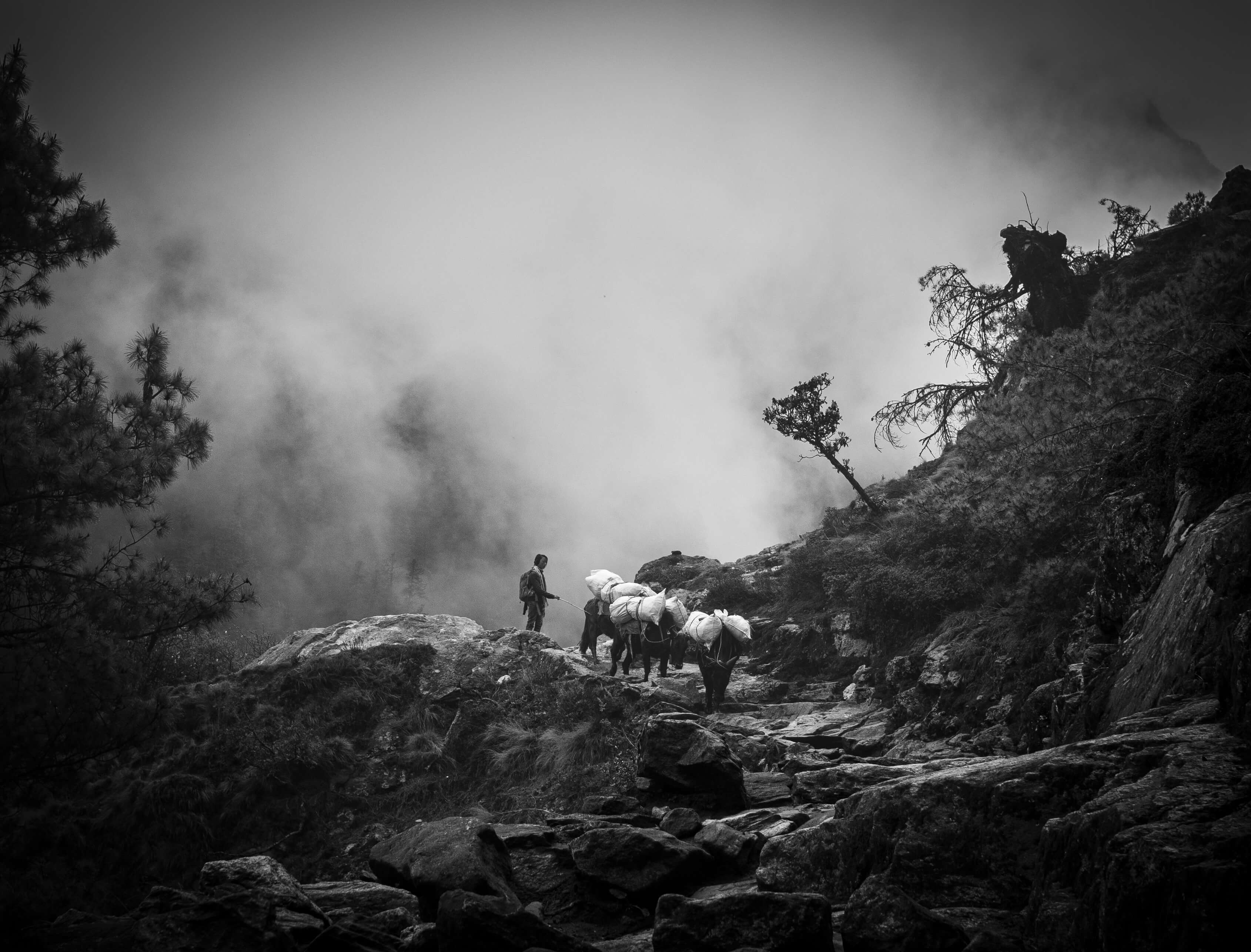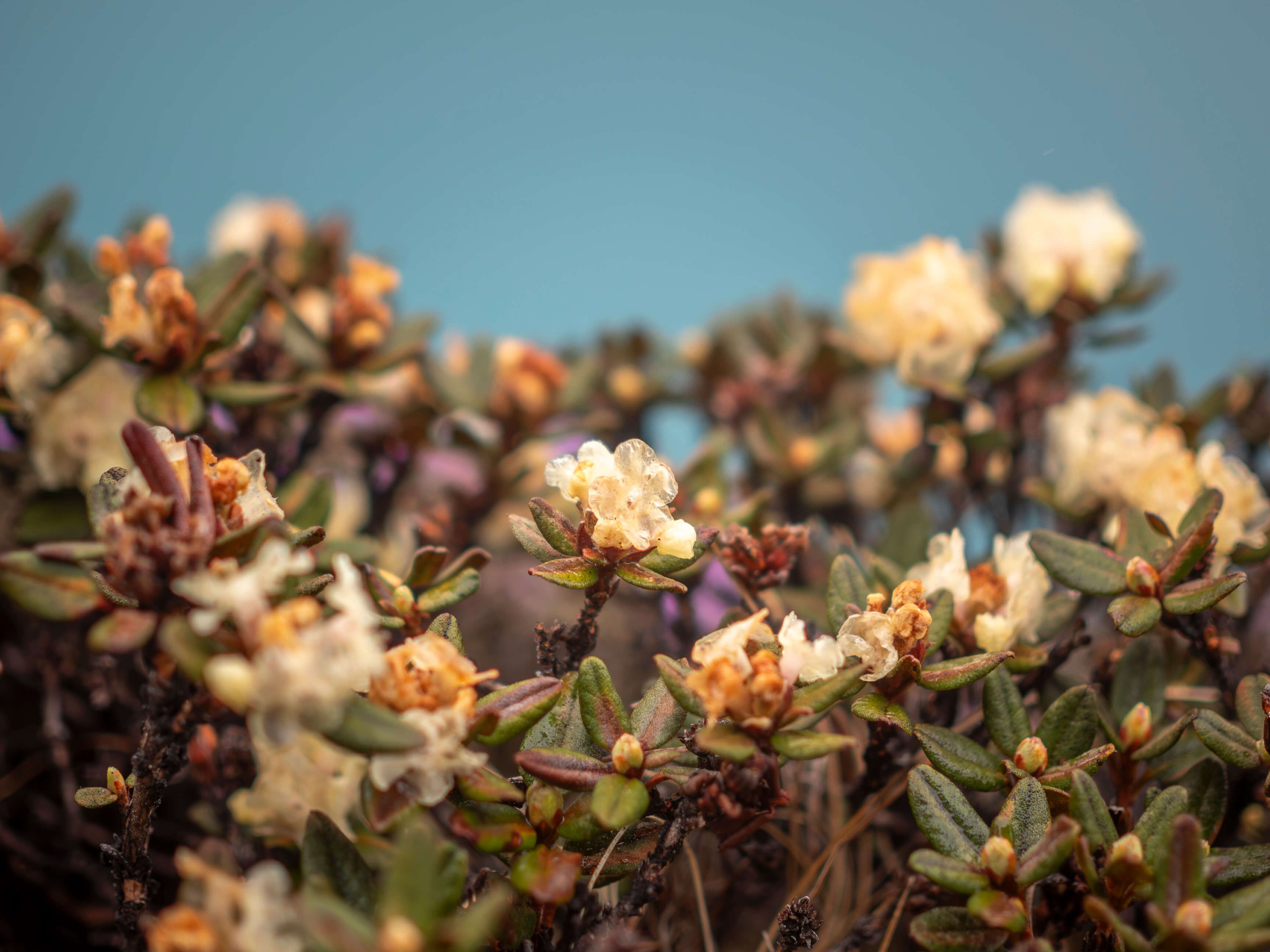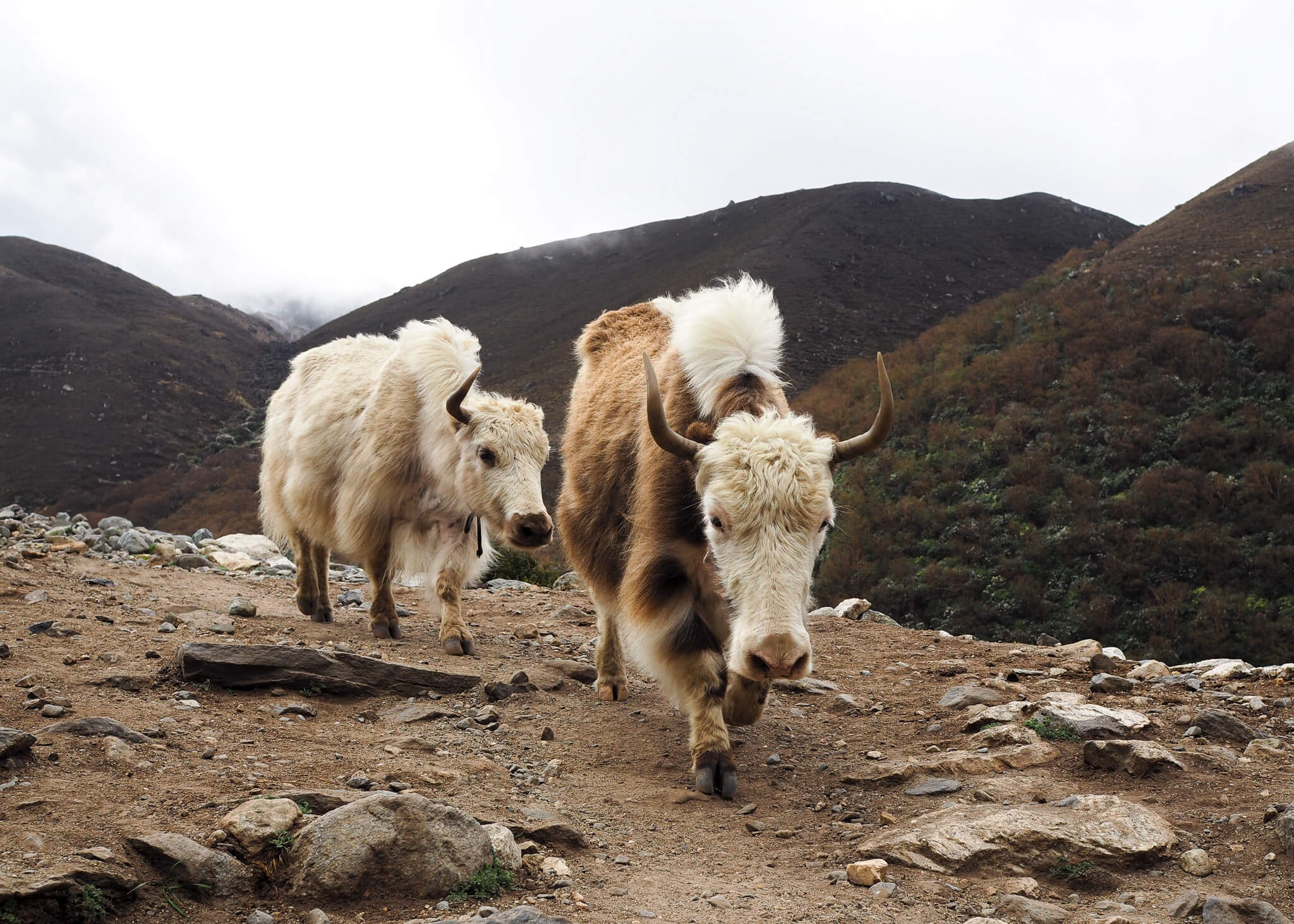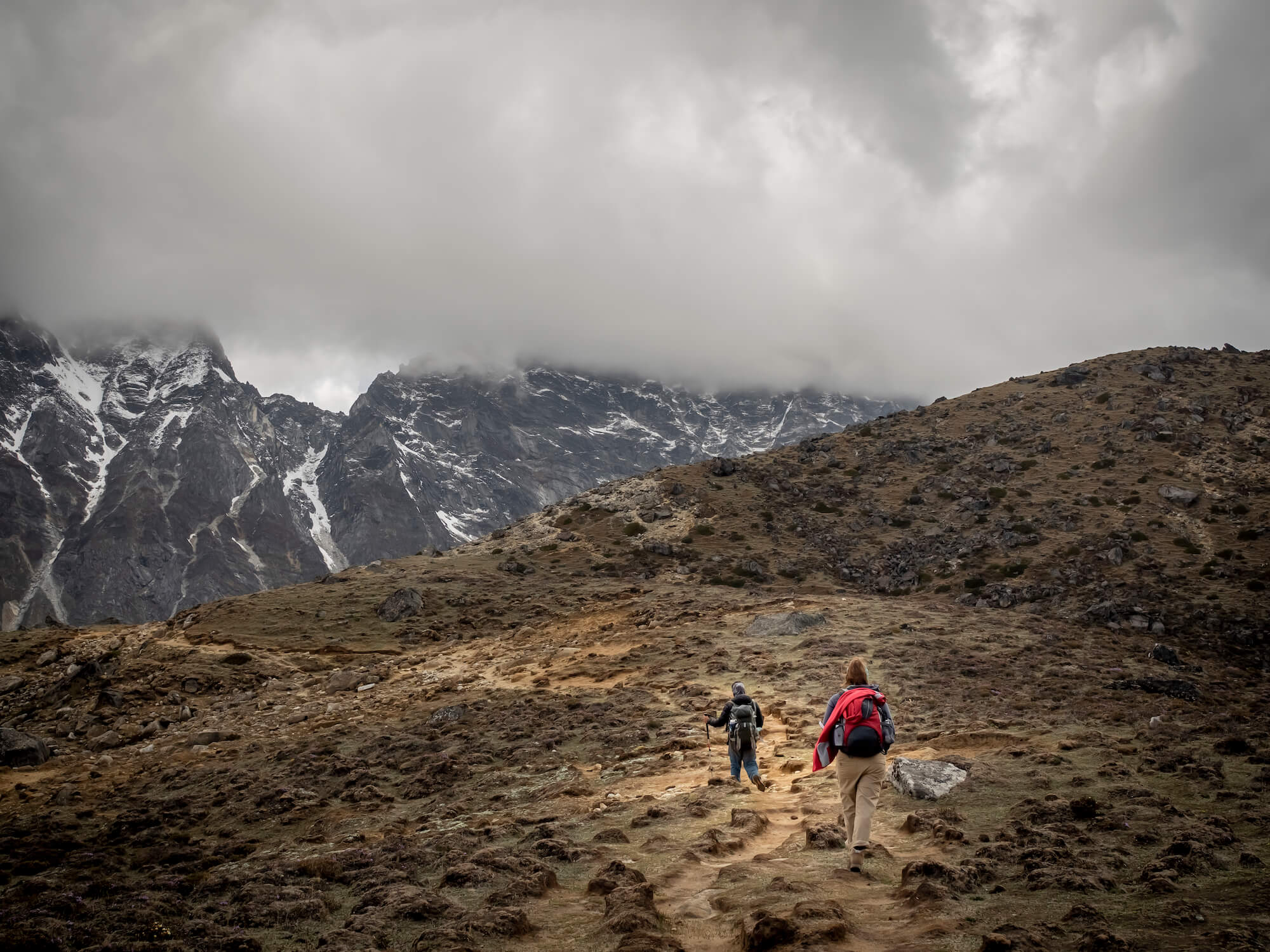Hiking in the Himalayas
May 27 to June 14, 2018

Everest Base Camp
The Everest Base Camp Trek, featuring Kala Patthar, Chola Pass, and Gokyo, provides cultural insights into Nepali lifestyle, history, and the study of Buddhism, all amidst diverse landscapes with awe-inspiring mountain vistas. This roughly three week trek in the Himalayas was one of the most profound experiences of my life. It began in Lukla, where just outside the town, a winding trail guided me through a misty rhododendron forest adorned with white, yellow, and pink flowers. The sand-like ground absorbed the sound of my footsteps, enveloping me in meditative silence.
रेशम फिरिरी रेशम फिरिरी,
उडेर जाउँ कि डाँडामा भन्ज्यांग,
रेशम फिरिरी

Emergency Medication
Beyond the standard hiking gear and first-aid essentials, high-altitude trip packs should include meds for addressing the challenges posed by thin air, ranging from discomforts such as nausea, fatigue, shortness of breath, and headaches to life-threatening emergencies linked to the buildup of fluids in the brain or lungs.
- Diamox
- to treat altitude sickness, either used preventatively or if symptoms appear
- Decadron
- to stabilize high altitude cerebral edema
- Sildenafil
- to stabilize high altitude pulmonary edema by causing pulmonary vasodilation

Nepali Basics
Learning a few words in Nepali before traveling shows respect for the local culture, and even a basic grasp of the language can open doors to deeper cultural interactions.
Thank you: Dhanyabaad
Please: Krpaya
Water: Pani
Good: Ramro
Hot: Tato
Cold: Chiso
Delicious: Dherai mitho chha

Itinerary
Day 1: Fly to Lukla and trek to Phakding
Day 2: Trek to Namche Bazaar
Day 3: Acclimatization day in Namche Bazaar
Day 4: Trek to Tengboche
Day 5: Trek to Dingboche
Day 6: Acclimatization day in Dingboche
Day 7: Trek to Lobuche
Day 8: Trek to Gorakshep, out/back to Everest Base Camp
Day 9: Summit Kala Patthar (5,550 m) and trek to Dzongla
Day 10: Trek to Dragnag via Cho La Pass
Day 11: Trek to Gokyo
Day 12: Rest day in Gokyo, summit Gokyo Ri (5,360 m)
Day 13: Trek to Dhole
Day 14: Trek to Khumjung
Day 15: Rest day in Khumjung/Khunde, visit monastery
Day 16: Trek to Namche Bazaar
Day 17: Trek to Lukla